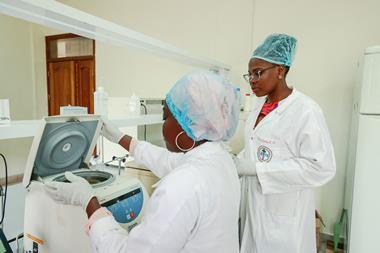Metals and metalloid elements in the environment have a major impact on human, animal and plant life as seen in the recent Hungarian red mud catastrophe. Some elements like calcium, iron, zinc etc serve as essential nutrients without which life fails to thrive, whereas lead, cadmium, mercury, arsenic, antimony and bismuth are xenobiotic elements and potentially toxic if present to excess. I read with considerable concern in scientific communications, references to such elements as titanium, silver, aluminium and even arsenic listed erroneously as trace elements in human biology and plant growth (Chemistry World, Nov 2011, p11).
Whether we are speaking of mammalian or botanical systems, it is imperative that we recognise what is meant by the term ’trace element’ and to distinguish it from non-trace or xenobiotic elements which may be identified in tissues by atomic absorption spectrometry or other means and which have no defined role as enzyme co-factors, structural components or physiological modulators. I emphasise the criteria defined by Dr Eric Underwood in 1977, that trace elements should fulfil one or more essential functions in the body and where deficiencies are manifest by characteristic defects in growth, maturation and general wellbeing. These defects are mitigated by dietary repletion. Failure to thrive can occur in cases of chronic trace metal deficiencies. In human biology, we include calcium, iron, zinc, magnesium, manganese, cobalt, sodium, potassium, copper, chromium, nickel, selenium, silicon, molybdenum, vanadium and possibly tin as essential nutrients and trace elements.
Elements found in the geosphere are commonly absorbed into humans and animals in the diet and in drinking water, as was probably the case in the Hungarian disaster. It is also common knowledge that many elements accumulate in plant life and enter human food chains. This is particularly well illustrated by arsenic, which is found in surface waters, rivers and streams, and where exposed populations are at risk of skin and other cancers, and where congenital deformities are increased. Many other xenobiotic elements including titanium, aluminium, silver, gold, arsenic, and lead are commonly found in the human body through consumption in the diet, migration from bone prostheses, dental appliances, dermal application or contact, and through inhalation. Some may accumulate in bone, others like silver and gold precipitate in soft tissues in the form of argyria or chrysiasis. The physiological and toxicological implications of metals in biology provide challenging opportunities for research and environmental protection.
Alan Lansdown FRSC FRCPath
Imperial College London, UK
In his letter (Chemistry World, October 2011, p43) P G Nelson talks of ‘the equation relating the kilogram to Planck’s constant’. There is no such equation. The Planck constant, h, is a constant of nature; its value is a given quantity that is not for us to change. The kilogram is a unit for which we may consider various alternative possible definitions. In the new SI, it is proposed that the kilogram should be defined by fixing the numerical value of h when it is expressed in the unit of action kg m2 s–1 = J s, whereas in the current SI the kg is defined by fixing the numerical value of the mass of the international prototype to be exactly 1 when expressed in the unit kg. This is an unsatisfactory definition because the mass of the international prototype is not an invariant of nature.
Two alternative ways of defining the unit kg are (i) to fix the numerical value of h when expressed in the unit kg m2 s-1 = J s, or (ii) to fix the numerical value of m(12 C) when expressed in the unit kg. In the new SI, definition (i) is preferred, although definition (ii) is conceptually simpler.
The value of the Avogadro constant, NA, is related to the definition of the unit mole, which as Nelson observes is the SI unit of the quantity amount of substance n. The relevant equations are:
n = N/NA or M(12 C) = NAm (12 C)
where N denotes the number of entities, and M (12 C) is the molar mass of carbon-12.
Two alternative ways of defining the mole are (i) to fix the numerical value of the molar mass of carbon-12, when expressed in the unit kg mol-1, or (ii) to fix the numerical value of NA when expressed in the unit mol-1. In the new SI, definition (ii) is preferred because it is simpler, is clearly related to counting entities, and is independent of the kilogram and the measurement of mass.
Ian Mills FRS FRSC CChem
University of Reading, UK
P G Nelson responds: I wrote ‘equations’ not ‘equation’. I was referring to the equations in the original article ( Chemistry World, September 2011, p42), viz E = hν and E = mc2. My point is that science is essentially provisional (Popper). We do not know for certain that a quantity we presently take to be constant in nature is completely constant. Indeed, some cosmologists have suggested that c might vary under the conditions of the big bang.
Although I was never involved in pyrotechnic technology during my working life, in common with many inorganic (and, I suspect, organic) chemists, I had a healthy interest in the subject. Despite many attempts to move forward in the field, aided and abetted by a colleague in our younger days, the best achieved in the area of prettiness was a constant succession of either ‘golden rain’ or ‘silver rain’, no matter what ingredients were used! We did, however, have more success with our bangers, which simply comprised sealed paper tubes of old-fashioned flash powder. I recall showering my mother’s cabbages in a purple mist one foggy Guy Fawkes Night, but the accompanying bang was well worth the subsequent scolding.
This year there was an excellent firework display on 5 November in the field next to my garden, and I derived a lot of pleasure trying to work out how the various effects and colour combinations had been achieved. The following day I discovered some relatively large curved shards of goldcoated glass in my garden, together with the more usual firework remnants of charred cardboard tubes etc. Presumably, these were the remains of the containment used for aerial bombs of some sort, which were probably meant to have completely disintegrated on ignition/explosion. On first appearance they looked similar to broken Christmas tree decorations, but on closer examination the glass was very much thicker, ranging from approximately 1mm to 2mm, and seemingly coated with a gold mirror on both sides.
Can anyone throw any light on their use in airborne fireworks?
Peter Towndrow FRSC CChem
Berkshire, UK
Recently, in the guise of a chemist, I visited a careers website. Unsurprisingly, this revealed that I might possess numerous skills: reading comprehension, active listening, critical thinking, problem solving, speaking, active learning, mathematics, self evaluation, writing.
Of course, this list is fuzzy and could be a superset or a subset. But when, acting uncritically, I ticked the corresponding (and no other) skills boxes on the inverse website, I found that someone so skilled could perhaps be suited to a number of occupations, including not only chemists and other scientists but also computer and information research, operations research analyst, statistician, geneticist, epidemiologist and many others. Curiously, accountants www.chemistryworld.org www.chemistryworld.org appear way down the list, in the second decile.
That is not to say there will be a job for the person ideally suited to a particular occupation. But in an age when market forces have predominated, it may seem ill-advised or even imprudent for a person with a fuller, more versatile skill set – no matter how precisely trained – to have restricted his or her job search to the narrowest sub-class.
Chief executives, like accountants, find themselves only in the second decile. Could it be then that they are employing other skills which I, the mere chemist, would always lack?
Alan Hare MRSC
By email
I was intrigued by Chara Nallaiah’s proposal for inverse charge sandwich compounds with cationic rings sandwiching an anionic centre citing bis(tropylium) selenide as a possible example (Chemistry World, November 2011, p37). I was however doubtful that such a sandwich compound would be stable as the tropylium would be very susceptible to nucleophilic addition, in this case by the selenide anion. With a few free minutes at the end of my Friday afternoon I thought it might be fun to put on a couple of DFT calculations to run over the weekend to test the stability of the proposed compound. Whilst I admittedly haven’t spent very much time looking at it, I couldn’t find an energy minimum for the sandwich compound suggesting that it is not a stable structure as suspected. The concept of inverse charge sandwich compounds may of course still be possible with other ring systems or other anions but not in this case. Pity though, would have made a nice paper...
Paul Elliott MRSC
University of Huddersfield, UK
As a retired employee of the chemical industry I welcome any development that will enthuse the public about chemistry. The web may well be an effective tool in helping the public to understand chemistry’s contribution to their healthy lives. However, the acceptance of chemical processes and products as safe neighbours may only be possible by real rather than virtual contact. I recollect vividly the happy reaction of the public who were long-term neighbours of the plant I worked on when they got to see the plant and its products at close range on site visits. The plant manufactures PVC and in earlier years had experienced antagonism, but inviting the neighbours in changed all that. May I urge a mix of real and virtual programmes to help the public appreciate chemistry and chemists.
John Baldwin MRSC CChem
Darlington, UK
It is with great sadness that we announce the dealth of Dr John Bradshaw, co-inventor of Zantac and one of the foremost medicinal chemists of his generation.
John joined Allen and Hanburys in October 1971 as a medicinal chemist, having gained his PhD in chemistry from the Victoria University of Manchester. John’s combination of intellectual curiosity, attention to detail and creativity marked him out as a singularly effective drug hunter. John made multiple contributions to major drug discovery projects at Glaxo and will be most remembered as the first chemist to synthesise AH19065, later to become ranitidine (Zantac).
John’s career path led him from the laboratory into the new science of computational chemistry and a keen interest in physicochemical properties. His modelling of the β2-agonist Salbutamol identified the trend that the length of the alkyl substituent on the ethanolamine component correlated with the lung retention time. This observation contributed to the invention of Salmeterol (one of the two active ingredients of Advair).
John retired from GlaxoWellcome in 1999, but his legacy can still be seen in the methodology and working practices of GSK scientists that he managed, mentored and inspired.
Darren Green FRSC CChem
Herts, UK
Additional information












No comments yet